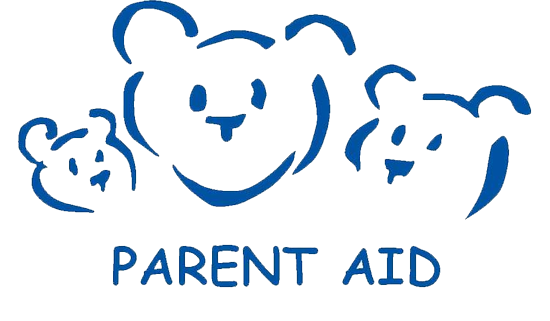Green Valley’s warm desert climate makes it an attractive retirement destination, but unfortunately, it’s also appealing to unwanted guests—termites. These destructive pests cause billions of dollars in property damage across the United States each year, and Arizona homeowners are particularly vulnerable due to the state’s year-round termite activity.
Unlike many regions where termite activity slows during winter months, Green Valley’s mild temperatures allow these insects to remain active throughout the year. This means homeowners need to stay vigilant regardless of the season. The good news? Catching termite infestations early can save you thousands of dollars in repair costs and prevent extensive structural damage.
Learning to identify the warning signs of termite activity is your first line of defense. From subtle changes in your home’s appearance to more obvious indicators like discarded wings, recognizing these signals early can make the difference between a minor treatment and major home repairs.
Understanding Termites in Arizona’s Desert Climate
Arizona hosts several termite species, but subterranean termites pose the greatest threat to Green Valley homes. These underground dwellers build extensive tunnel systems that can extend hundreds of feet from their colonies, allowing them to access your home’s wooden structures while remaining largely invisible.
The desert Southwest’s unique environment creates ideal conditions for termite survival. Low humidity levels that might deter termites in other regions are offset by Arizona’s consistent warmth and the irrigation systems common in residential areas. These artificial water sources provide the moisture termites need to thrive, essentially creating oases that support large colonies near your home.
Drywood termites also inhabit the region, though they’re less common than their subterranean cousins. These termites live directly in the wood they consume, making them particularly difficult to detect until damage becomes extensive.
Visual Signs of Termite Damage
Mud Tubes and Tunnels
The most recognizable sign of subterranean termite activity is the presence of mud tubes. These pencil-thick tunnels appear along foundation walls, in crawl spaces, and sometimes on exterior walls. Termites construct these protective highways from soil, saliva, and fecal matter to travel between their underground colonies and food sources.
Check areas where your home’s foundation meets the ground, paying special attention to corners and areas with poor ventilation. Mud tubes often appear in locations where they’re partially hidden, such as behind water heaters, in utility rooms, or along the interior walls of garages.
Wood Damage Patterns
Termite-damaged wood develops a distinctive honeycomb pattern as the insects consume cellulose from the inside out. Unlike carpenter ant damage, which creates smooth, clean galleries, termite damage appears rough and follows the wood’s natural grain.
Tap wooden structures throughout your home with a screwdriver handle or similar tool. Healthy wood produces a solid sound, while termite-damaged wood sounds hollow or papery. This technique works particularly well for detecting damage in baseboards, door frames, and window sills.
Sagging or Buckling Structures
Advanced termite damage manifests as structural problems throughout your home. Floors may begin to sag or feel spongy underfoot, particularly in areas near bathrooms, kitchens, or laundry rooms where moisture levels are higher. Door frames and window frames may warp, making doors and windows difficult to open or close properly.
Wall surfaces might develop small pinholes, cracks, or areas where paint appears to bubble or peel without apparent cause. These changes often indicate termites are feeding on the wooden framework behind your walls.
Behavioral Indicators
Swarming Activity
Termite swarms represent one of the most obvious signs of an established colony. These reproductive flights typically occur during warmer months, often after rain events when humidity levels rise. In Green Valley, swarming can happen multiple times throughout the year due to the extended warm season.
Swarmers emerge from colonies to establish new nests, and finding them in or around your home indicates a mature colony is nearby. These winged termites are often mistaken for flying ants, but termites have straight antennae, equal-length wings, and thick waists, while ants have elbowed antennae, unequal wing lengths, and pinched waists.
Discarded Wings
After swarming, termites shed their wings, leaving behind small piles of translucent wings near windowsills, door frames, light fixtures, and spider webs. These discarded wings often accumulate in areas where swarmers were attracted to light sources or became trapped while trying to exit your home.
Finding discarded wings doesn’t necessarily mean termites are currently active in your home, but it indicates reproductive termites were present, suggesting an established colony exists nearby.
Frass and Droppings
Drywood termites produce distinctive fecal pellets called frass, which appear as small, hexagonal pellets resembling sawdust or coffee grounds. These droppings accumulate below areas where termites are actively feeding, often appearing in small piles beneath furniture, along baseboards, or on windowsills.
Subterranean termites typically don’t leave visible droppings since they use their waste to construct mud tubes and maintain tunnel systems.
Environmental Clues
Moisture Problems
Termites require moisture to survive, so areas of your home with water issues become prime targets for infestation. Check around leaky pipes, areas with poor drainage, and spaces where humidity tends to accumulate.
Look for water stains on walls or ceilings, particularly if they appear without an obvious source. Sometimes termite activity creates small leaks by compromising wooden structures that support plumbing or roofing materials.
Landscaping Factors
Your yard can provide valuable clues about termite risk. Dead trees, stumps, woodpiles, and landscape timbers create attractive termite habitat close to your home. Examine these areas regularly for mud tubes or signs of termite activity.
Irrigation systems, particularly those with leaks or areas of overwatering, create the moisture conditions termites need. Pay attention to areas where sprinkler systems consistently wet soil near your home’s foundation.
Professional Inspection Considerations
While homeowners can identify many termite warning signs, professional inspections provide the most reliable assessment of termite activity. Pest control professionals have specialized tools and training to detect subtle signs that homeowners might miss.
Consider scheduling annual termite inspections, particularly if your home has a history of termite problems or if you’ve noticed any warning signs. Professional inspectors can access areas like crawl spaces, attics, and wall voids that are difficult for homeowners to examine thoroughly.
Many pest control companies in Green Valley offer free initial inspections, making professional assessment an accessible option for homeowners concerned about potential termite activity.
Taking Action When You Spot Warning Signs
If you discover potential signs of termite activity, document your findings with photographs and contact a licensed pest control professional promptly. Avoid disturbing mud tubes or damaged areas until after a professional inspection, as this can cause termites to relocate and make detection more difficult.
Time is critical when dealing with termite infestations. These insects work continuously, and colonies can cause significant structural damage in relatively short periods. Early intervention typically results in more effective treatment and lower overall costs.
Remember that successful termite control often requires ongoing monitoring and maintenance. Even after treatment, regular inspections help ensure termites don’t return to previously treated areas or establish new colonies nearby.
Protecting Your Green Valley Investment
Recognizing termite warning signs represents just the first step in protecting your Green Valley home from these destructive pests. Arizona’s climate means termite threats persist year-round, making vigilance and regular monitoring essential for long-term home protection.
Stay alert for the signs discussed in this guide, and don’t hesitate to seek professional help when you notice potential termite activity. The cost of professional inspection and treatment pales in comparison to the expense of repairing extensive termite damage. Your home is likely your largest investment—protecting it from termites helps preserve both its structural integrity and financial value for years to come.











